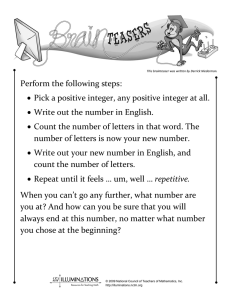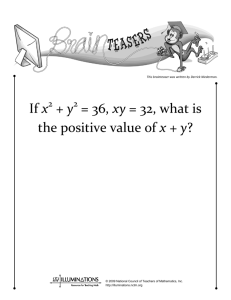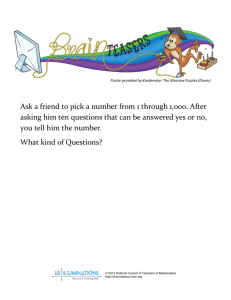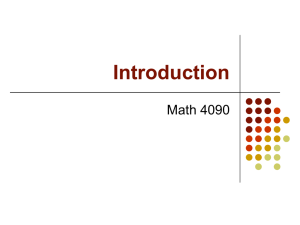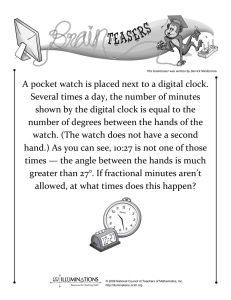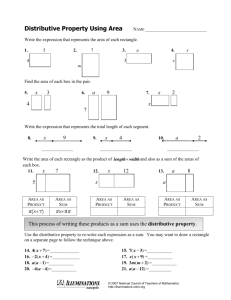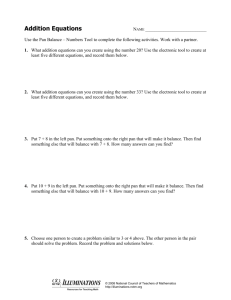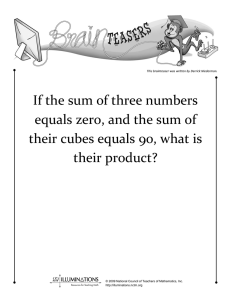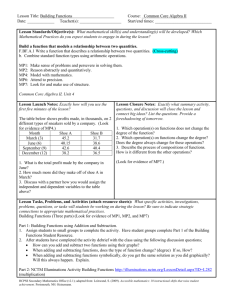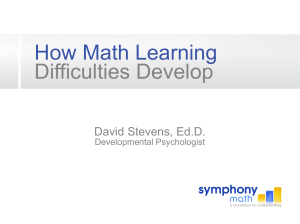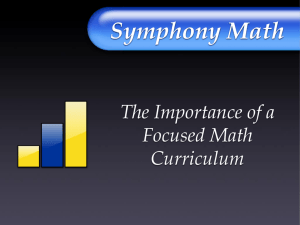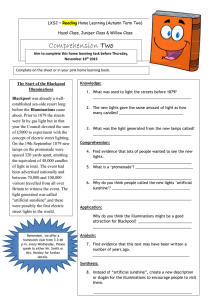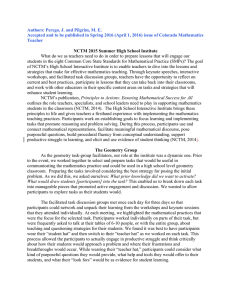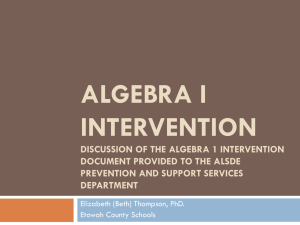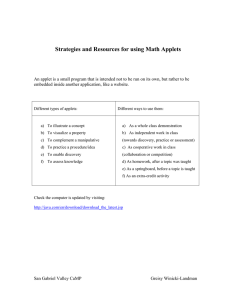Find four distinct integers a, b, c, and d such that ab = c + d and cd
advertisement
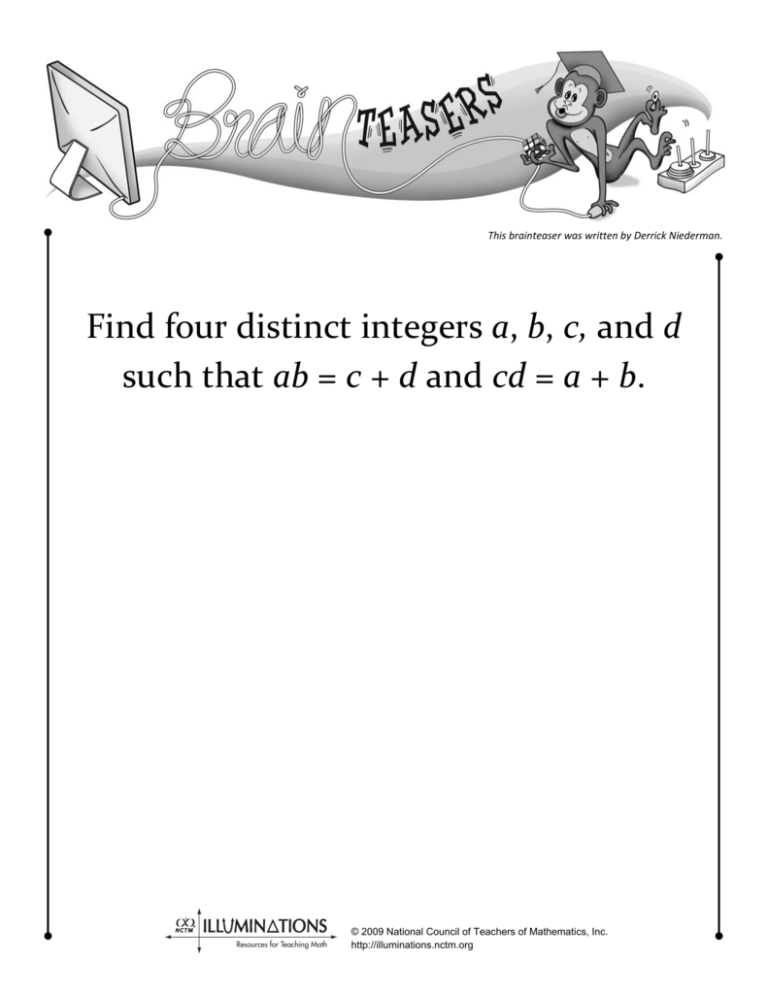
This brainteaser was written by Derrick Niederman. Find four distinct integers a, b, c, and d such that ab = c + d and cd = a + b. Resources for Teaching Math © 2009 National Council of Teachers of Mathematics, Inc. http://illuminations.nctm.org Solution: a = 5, b = 1, c = 2, and d = 3. (Because of the symmetry of the equations, several rearrangements of these numbers will also satisfy the equations.) Got no idea where to begin with this one? There are four unknowns but only two equations, therefore algebra won’t work. So, try some numbers, and see what happens. Try a = 7, b = 8, c = 9, and d = 10. Then ab = 56, a + b = 15, cd = 90, and c + d = 19. Well, that’s no good! The products are much larger than the sums. And for even larger values of a, b, c, and d, the difference will be more stark. So, it seems that the solution will need to involve smaller values. Try a = 1, b = 2, c = 3, and d = 4. Then ab = 2, a + b = 3, cd = 12, and c + d = 7. That’s not a correct solution, either, but it does shed some light. Note that the sum a + b and the product ab are both less than the sum c + d and the product cd. So, when you pick four numbers, the two smallest shouldn’t be a and b. If a is the smallest value, then b should be the largest, and c and d should be somewhere in between. So, try rearranging. Let a = 1, b = 4, c = 2, and d = 3. Then ab = 4, a + b = 5, cd = 6, and c + d = 5. Still not quite there, but it’s close, isn’t it? The product ab is one less than c + d, and the product cd is one more than a + b. From that, you might realize that a solution can be found if the value of b is increased by one. Indeed, a = 1, b = 5, c = 2, and d = 3 is a solution. Interestingly, there are no others. The text below will prove that there is only one solution, but if you want to stop here, that’d be okay. Let a be the smallest of the four numbers. If a > 2, then ab > 2b > a + b = cd > c + d. But the problem requires that ab = c + d, so we’ve reached a contradiction. Therefore, a < 2, and since a must be a positive integer, a = 1. When a = 1, the equation ab = c + d becomes b = c + d, and the equation a + b = cd becomes 1 + b = cd, which is equivalent to b = cd – 1. These results can be combined to give 1 + c + d = cd, which can be rewritten as cd – d – c – 1 = 0, or (c – 1)(d – 1) = 2. This final equation implies that c = 2 and d = 3, or vice versa. Resources for Teaching Math © 2009 National Council of Teachers of Mathematics, Inc. http://illuminations.nctm.org
